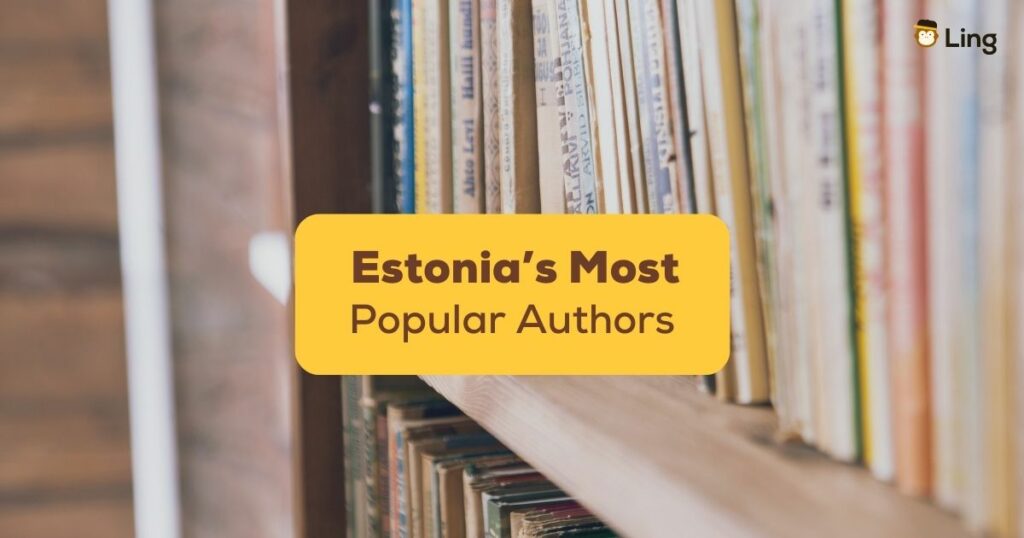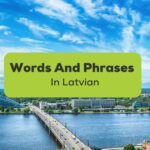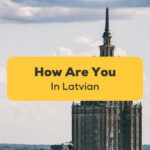For such a tiny country, the Baltic nation of Estonia has churned out a remarkable number of influential authors. This is probably due to the country’s eventful history and its geographical position in Europe. In this post, we’ll take a look at a handful of the Estonian most popular male authors of all time.
With the National Awakening that began in the 1850s, Estonia began to create a national identity as well as a language and literature. The 19th century saw the birth of such institutions as the Society of Estonian Literati, the Estonian Students’ Society, the Estonian Theatre, and later the Estonian Writers Union. The national epic Kalevipoeg was published in 1862, and a slew of writers started to produce some truly amazing works.
Now, let’s look at some of the most popular male authors and learn about the Estonian language.
Estonian Most Popular Male Authors Of All Times
1. A. H. Tammsaare (1878-1940)
Anton Hansen Tammsaare is perhaps Estonia’s most revered literary figure and is highly-regarded among Estonian most popular male authors. His realist and philosophical works have deeply influenced the country’s literature and cultural identity. The poor son of a farmer, Tammsaare had an unusually educated upbringing. A bout of tuberculosis in 1911 meant a year in a sanatorium, which was followed by years recovering on his brother’s farm, where he devoured the works of writers including Shakespeare, Homer, and Cervantes.
Tammsaare is best known for his five-part epic novel, “Truth and Justice” (Tõde ja õigus), which is considered one of the greatest achievements in Estonian literature and has been called “The Estonian Novel.” This monumental work explores the lives of Estonian farmers and their struggles, offering a profound commentary on the human condition.
“Truth and Justice” is a vivid portrait of rural life, addressing themes such as justice, morality, and the complexities of human relationships. Tammsaare’s characters are multidimensional, and their experiences resonate with readers on a deeply emotional level. The novel has been translated into numerous languages, solidifying Tammsaare’s place in the global literary canon. Other works worth a look include “Devil with a False Passport” (Põrgupõhja uus Vanapagan) and “The Boy and the Butterfly” (Poiss ja liblikas).

2. Jaan Kross (1920-2007)
Born the son of a metalworker, Jaan Kross graduated from the University of Tartu’s School of Law, where he went on to teach as a professor. Arrested by both the Germans during the war and the Russians under Soviet occupation, Kross’ literary life began with poetry. He was regarded as a remarkable poet but moved on to prose and became a master of historical fiction. His novels almost exclusively revolve around historical events and figures, providing insight into Estonia’s turbulent past. The grand old man of Estonian letters, his works have been translated into multiple languages and are celebrated for their rich character development, historical accuracy, and philosophical underpinnings.
One of his most notable novels, and one of the best-loved works in Estonian literary history, is “The Czar’s Madman” (Keisri Hull). It deals with the life of Friedrich Wilhelm von Toll, a real historical figure who went mad in the service of the Russian Empire. Some think he should have been awarded a Nobel Prize for his efforts.
Other works to be found in translation worth hunting out include: “The Conspiracy and Other Stories” (Silmade avamise päev), “Between Three Plagues” (Kolme katku vahel), and “Sailing Against the Wind” (Vastutuulelaev).
3. Eduard Vilde (1865-1933)
Eduard Vilde is often referred to as the “father of Estonian prose.” He played a pivotal role in establishing a distinct literature during a time when the country was still under foreign rule. Vilde’s works in the Estonian language often depict the social and political realities of his time, particularly focusing on the struggles of Estonian peasants and their relationship with the ruling Baltic German nobility.
One of Vilde’s most famous works is “The War in Mahtra” (Mahtra sõda), a novella inspired by the Mahtra Rebellion of 1858. The story captures the energy of the Estonian National Awakening, portraying the bravery and determination of the peasantry in their fight for self-determination.
4. Oskar Luts (1887-1953)
Oskar Luts was a beloved Estonian prose writer known for his humorous and heartwarming written literature and stories of provincial life. His most famous work, “Spring” (Kevade), is a classic of Estonian literature and a cherished part of the national cultural heritage. Set in the fictional small town of Paunvere, “Spring” portrays the lives and adventures of schoolchildren, providing a nostalgic and endearing depiction of Estonian rural life.
Luts’s writing is characterized by an undisguised love of Estonia and a keen sense of humor. His ability to capture the simplicity and warmth of everyday life endeared him to readers of all ages. “Spring” has been adapted into numerous films and stage productions and has garnered numerous literary awards.

5. Mati Unt (1944-2005)
Mati Unt was a multifaceted Estonian writer who left an indelible mark on the country’s literary scene. He was not only a novelist but also a playwright, essayist, and director. Unt’s works often feature surreal and symbolic elements, pushing the boundaries of traditional storytelling.
One of his most celebrated novels, “The Autumn Ball” (Sügisball), is a complex and philosophical exploration of the human psyche. Unt’s writing is characterized by its experimental and avant-garde approach, attracting readers who appreciate challenging and thought-provoking literature.
Estonian Vocabulary About Authors, Books, And Reading
Let’s take time to learn more about Estonian vocabulary. Great Estonian authors can give insights into how the culture is. Moreover, you can even learn Estonian words and phrases that you’ll use in the future. Check some of them and practice them with your Estonian-speaking friend.
A handy language-learning app like Ling can be the easiest way to study languages without needing to carry heavy books. Why not try the Ling app today at Google Play or the App Store? You’ll surely see the difference in your progress when you can learn Estonian everywhere you go at any time you desire to study it.
Explore More About Estonian With The Ling App
There you have it! Among thousands of Estonian most popular male authors, there are only five that we regard as the best. Being able to read in Estonian not only dramatically increases your mastery of the language, but opens up a wide world of authors to enjoy. With the Ling app, you will be introduced to all the tools you need to read the greatest Estonian literature in its original language.
Try it now and see how you’ll love the Estonian language.



































































